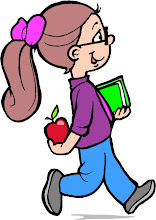- Hymn: Take My Life
- Memory Verse: John 3:4
- Searching for Treasure: Study 14, Intro - #4
- Prayed daily
- Started reading Listen for the Whippoorwill about Harriet Tubman
- Hymn: It Took a Miracle
- Memory Verse: John 3:5
- Searching for Treasure: Study 15, Intro - #4
- Bible Reading: Exodus 25 - 30
- Reviewed this year's catechism
- Prayed daily
- Continued reading Listen for the Whippoorwill
- Hymn: He Leadeth Me
- Memory Verse: John 3:6-7
- Searching for Treasure: Study 16, Intro - #4
- The Princess and the Kiss: Lesson 13 in the Life Lessons book. This lesson is about not making decisions based on your feelings, but on God's Word and giving Him your whole heart and about reaping what you sow (or plant). We did two art projects with this lesson.
- The first was to remind us that our feeling change and are "blown about" by circumstances. We took paper and colored an ocean scene with a wavy ocean. Then we took brown paper and drew a boat and cut it out and wrote "FEELINGS" on it. We used a brad to attach the boat to the ocean scene, so it would rock back and forth.
- For the second project, I drew four seeds on a large piece of paper and colored them. We named them faithfulness, love, kindness, and joy. K. drew a stem and flower from each seed. We talked about what we reap if we plant these characteristics in our lives. We decided on trust, love, friends, and happiness. Then I drew roots coming from each seed and dirt around the seeds and roots. We talked about how roots get nourishment for plants, and where would she get nourishment to plant these things in her life. Then I wrote "God's Word" below the roots.
- We reviewed our catechism.
- We prayed each day.
- We finished reading Listen for the Whippoorwill.
- We reviewed previously memorized passages.
- Hymn: Heaven Came Down and Glory Filled My Soul
- Memory Verse: John 3:8
- Searching for Treasure: Study 17, Intro - #4
- Catechism #95, 96, 98
- We reviewed this year's catechism
- We prayed daily
- We started reading Escape from the Slave Traders about David Livingstone
- We reviewed previously memorized passages.
- Hymn: Christ Arose
- Memory Verse: John 3:9-10
- Searching for Treasure: the summary lessons from studies 14 - 17
- K. was disappointed that we were reviewing, so each day I let her tell me what she remembered about the study we were reviewing that day. Then we would just look up the Bible verses for the ones she did not remember.
- We reviewed this year's catechism questions twice and the questions from previous years once
- We prayed daily
- We continued reading Escape from the Slave Traders.
- We reviewed previously memorized passages.






